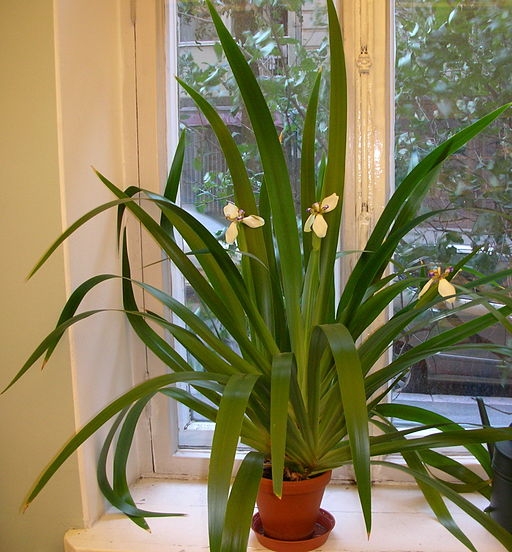You take your Persian or Oriental rug out of storage and notice that, because you folded it for storage, it now has a deep fold in it, one that – no matter what you do – just stays there. (Tip: never fold a rug for storage; always roll it up.)
Or you see that your beautiful rug is so faded from the sun, its colors look almost completely washed out.
Or you’ve placed a large potted plant on the rug (another no-no) and you notice that water has leaked from the pot onto your rug, causing considerable water damage (as in, the rug is so sodden, pieces of it just pull away in your hands).
 An indoor plant this beautiful should be showcased in your home. Just don’t place it on your fine handmade rug!
An indoor plant this beautiful should be showcased in your home. Just don’t place it on your fine handmade rug!
Or your beloved cat has taken her claws to your antique Persian rug, lifting up a good number of the wool strands and breaking them. In fact, there appears to be a pretty big bald spot where Fluffy has done her dirtiest.
How can you tell if your rug is beyond repair? Read below.
First, an important note: you should never attempt to repair a genuine Persian or Oriental rug yourself. You should only give a professional rug repair person – preferably someone who has experience in ancient rug-making skills – with this important task.
Some issues are much easier to fix than others. A rug that’s been damaged by moths, for example, shouldn’t be too hard to repair, while a rug with a large bald spot (the rug will need extensive reweaving) may be too expensive to repair for your budget.
Have your damaged rug inspected by a professional rug repair specialist to ascertain what the cost might be. If a full restoration is beyond your budget, ask about minor work that could be done. This may not restore your rug to its original glory, but if it’s affordable, you could at least see some use still from your rug.
Please understand that if the ends of your rug’s fringes are unraveling or if rows of knots are coming away, restoration definitely is possible, but can be very expensive. Unless you’ve had the rug appraised and you know that it’s very valuable, it may not be worth doing. The decision, of course, is up to you.
A cheaper repair – not restoration – for the above two issues (knots coming away and/or fringe unraveling) would be to excise the loose material and then secure what’s left. A shorter fringe also could help. (However, if the damage to the fringe extends to the rug’s pile area, the rug may need to be re-woven and your costs will go up accordingly.)
If you do decide that the cost of repairing/restoring your rug is too prohibitive, all is not lost. You could ask the professional repair specialist to shorten your rug (cutting away the damaged area) or even create decorative pillows out of the fabric.
If your fine handmade rug has experienced water, moth, sun, urine, wine/food, or some other damage, contact the rug restoration experts at Persian Rug Cleaner of Dallas. Give us a call at 972-447-9600 to learn more about our repair and restoration services.
Photo courtesy Iamnee/FreeDigitalPhotos.net

